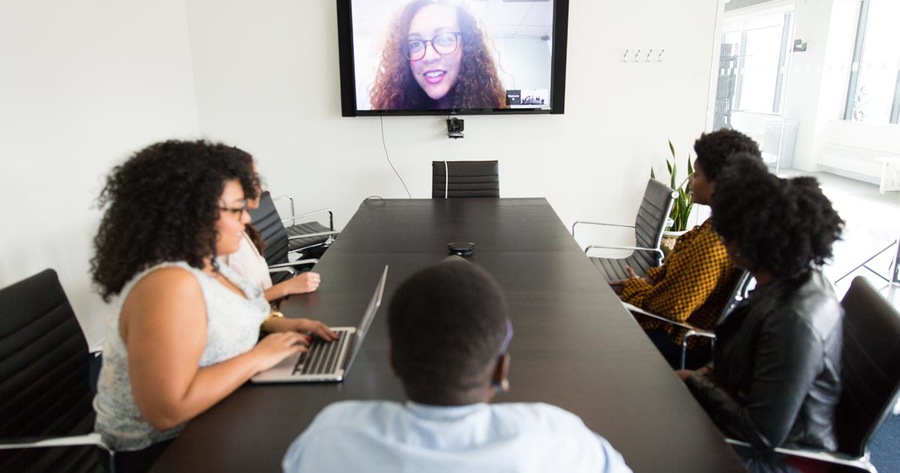A recent Informal Science article, authored by Perrin Chick, Sue Allen, Ph.D., and Kate Cook, Ed.D. of the Maine Mathematics and Science Alliance, addresses strategies to hold meetings that include both face-to-face and virtual participants—minimizing anyone feeling left behind and supporting a more equitable workplace.
The authors shared three types of situations that call for a blended model of engagement and examples of each situation, offering several simple strategies to keep the meeting or workshop engaging, inclusive, and accessible to all participants.
1. An in-person event with one or a few remote participants.
The article cites the example of the months of planning that went into the National Science Foundation Advisory meeting for the ACRES project.
"Hotel rooms were booked, meals ordered, and a full and varied agenda was crafted. A few days before the meeting, one advisor broke her ankle and announced she could not attend. The team pivoted immediately and revised our meeting to become a blended experience, with the advisor able to meaningfully engage in all of the large- and small-group aspects of the meeting," the authors wrote.
Six strategies were offered for this point, including carrying a dedicated laptop or tablet to different locations during breakout groups, allowing the remote person to take part in all discussions, particularly if the device can be placed at eye level with in-person participants.
2. Meetings where many or most people are offsite.
"Whether there are 2 or 25 people working offsite, our MMSA staff meetings look and feel basically the same. Remote colleagues are engaged in the agenda because they are collaborating and sharing resources and feedback, having side conversations via chat, and making eye contact with the people speaking. This happens because as soon as one person is remote, all of the staff will join a Zoom meeting and continue along as if everyone is remote," the authors wrote.
The article shared seven helpful strategies for accomplishing this type of meeting successfully, including encouraging participants to rename themselves with their first names and gender identities (e.g. Perrin, she/her) to allow others to easily and respectfully refer to them and their comments during the conversation.
3. Large events involving groups of people at remote satellite sites.
This scenario uses an example from when the Maine Curriculum Leaders Association approached MMSA in the fall of 2019 with a conundrum.
"A large event was scheduled to occur in Portland, Maine, and there were educators in other parts of the state who wanted to attend but distance prevented this from being economical and practical. The in-person event was reimagined to include two remote sites. Over the course of the six-hour professional development session, there were presentations on content, opportunities to do small group work, networking over lunch, and hands-on activities," the authors wrote.
Sending materials well ahead of time, planning breaks and meals to occur at similar times, and changing your video background to something with your company's logo to help participants identify you at a glance
were among the seven strategies shared for this type of meeting.
To read the article in its entirety and see the full list of strategies, click here.
Courtesy of NAA.




